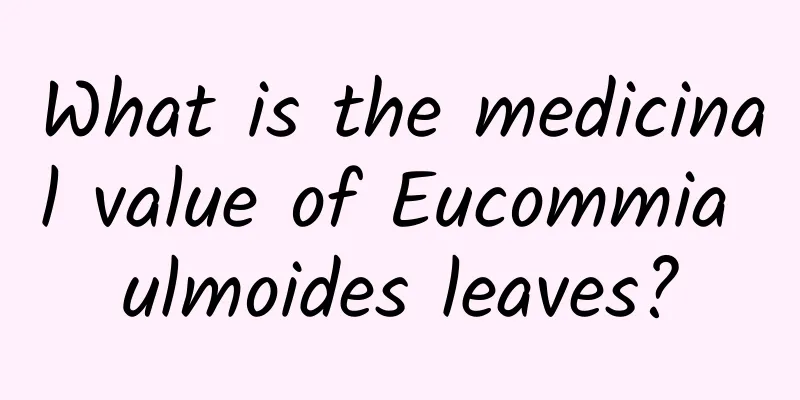Will Neisseria meningitidis definitely cause meningitis?

|
Recently, the news that two junior high school students in Xining died of illness has attracted the attention of many netizens. The news report mentioned: "Ma Moumou, blood culture positive for Neisseria meningitidis", "Yan Moumou, blood culture positive for Neisseria meningitidis". (Source: China News Service WeChat Official Account) So, what is Neisseria meningitidis? Will culturing Neisseria meningitidis definitely cause meningitis? How can we prevent it? This article will answer these questions for you one by one. What is Neisseria meningitidis? Neisseria meningitidis was first isolated from cerebrospinal fluid by Weichselbaum in 1887. It is a Gram-negative bacterium, with individual bacteria in kidney or bean shape, often arranged in pairs with concave surfaces, so it is sometimes called "meningococcus". The bacteria have high nutritional requirements and are easy to grow in blood agar or chocolate agar medium at 37°C and 5%-10% CO2. Generally, after 48 hours of culture, Neisseria meningitidis forms round, shiny, transparent or translucent, dew-drop-like mucus-type colonies with a diameter of about 1-5 mm on the culture medium. The bacteria contain autolytic enzymes and are easily dissolved and killed if not inoculated in time. They are sensitive to cold and dryness. Based on the differences in capsular polysaccharide antigens, Neisseria meningitidis can be divided into at least 13 serogroups, including A, B, C, Y, and W135. There is no persistent cross-immunity between serogroups. The main pathogenic component of Neisseria meningitidis is endotoxin, which acts on small blood vessels and capillaries, causing necrosis, bleeding, skin petechiae (spots) and microcirculation disorders. In severe sepsis, the release of large amounts of endotoxin can cause disseminated intravascular coagulation and toxic shock. What diseases does Neisseria meningitidis cause? Humans are susceptible hosts to Neisseria meningitidis. The bacteria invade the body from the nasopharynx and adhere to the surface of the epithelial cells of the nasopharyngeal mucosa by the action of pili. Whether the disease will occur after infection depends mainly on the human immune function. Most people are infected as carriers or latently infected, and the bacteria only stay in the body for a short time before being cleared by the body. A few people show upper respiratory tract infections, and only 1% of the population develops purulent meningitis. This purulent meningitis caused by Neisseria meningitidis through the respiratory tract is called epidemic cerebrospinal meningitis (abbreviated as meningococcal meningitis). According to my country's "Law on the Prevention and Control of Infectious Diseases", meningococcal meningitis is reported and managed as a Class B infectious disease. Once the bacteria invade the central nervous system, it has the characteristics of rapid onset, rapid progression, and high mortality rate. What are the clinical manifestations of meningococcal disease? The main clinical manifestations of meningococcal meningitis are sudden high fever, headache, vomiting, bleeding spots or ecchymoses on the skin and mucous membranes, and neck stiffness, among other signs of meningeal irritation. How to prevent the occurrence of meningococcal meningitis? Meningococcal meningitis is an infectious disease with a high latent infection rate and high mortality rate. When a patient with meningococcal meningitis appears, it indicates that the carrier rate of the surrounding population is already at a high level. Before the 1980s, meningococcal meningitis was highly prevalent in China, with five nationwide epidemics of group A meningococcal meningitis. Since the 1980s, China has widely used meningococcal vaccines, and the incidence has dropped significantly. Vaccination against meningococcal meningitis is the best preventive measure. Currently, there are both free national immunization program vaccines and voluntary, self-paid non-immunization program vaccines available. In addition to vaccination, other good hygiene measures are equally important, including: developing good living and hygiene habits; ventilating frequently to keep indoor air circulating; strengthening exercise, keeping a regular schedule, getting enough sleep, and eating a reasonable diet to improve the body's disease resistance; when symptoms appear, seek medical treatment in a timely and standardized manner; early detection and early standardized treatment can alleviate symptoms and avoid serious health damage. What is a blood culture? The report also mentioned that the two cases of meningococcal meningitis were diagnosed by blood culture. We can also popularize this clinical microbiological testing technology. Blood culture (abbreviated as blood culture) is one of the most important tests in clinical microbiology laboratories. It is to collect blood from the patient and put it into a bottle containing culture medium to determine whether the microorganisms (bacteria or fungi) that cause the patient's infection have invaded the patient's blood. It is also the gold standard for diagnosing bloodstream infection. A positive result has a very high application value for clear diagnosis and symptomatic treatment. References [1] Diagnosis of epidemic cerebrospinal meningitis: WS 295-2019[S]. 2019. [2] Shi Wei, Yao Kaihu. Focus on epidemic meningitis outbreaks and defeating meningitis by 2030: a global roadmap[J]. Chinese Journal of Practical Pediatrics, 2023, 38(4):241-244. [3] Chinese Preventive Medicine Association. Expert consensus on meningococcal vaccination in China (2023 edition)[J]. Chinese Journal of Vaccines and Immunization, 2023, 29(1):90-101. [4] Expert consensus on the clinical practice of blood culture technology for the diagnosis of bloodstream infection[J]. Chinese Journal of Laboratory Medicine, 2022, 45(2):105-121. Author: Shuai Wang, MD Department of Infection and Clinical Microbiology, Beijing Chaoyang Hospital, Capital Medical University |
Recommend
A post-90s doctor discovered a new species! Named after this city
Recently, Huang Chao, a doctoral student born in ...
Have your teeth ever been soured?
Since the beginning of autumn, the heat has gradu...
From artificial intelligence to Landau School, what have we lost in these years?
From artificial intelligence to Landau School, wh...
Breaking news! Positive matter can exist because of neutrinos, which reshuffle the positive and antimatter!
Scientific research continues to surprise, and no...
Can eating Polygonum multiflorum cure kidney disease?
Many people don't know what effects and funct...
The efficacy and function of Chinese medicine Huoxiang
Patchouli is a Chinese medicinal material that pe...
The efficacy and function of Cassia cassia
Many people know that sea cassia has unique thera...
The efficacy and function of teff
As a traditional Chinese medicine, do you know th...
The efficacy and function of orange leaves
Tangerine leaves are a medicinal material that ca...
Wear thin clothes under your down jacket to keep warm! A super simple dressing trick, save it now
When winter comes, people who are afraid of cold ...
Did you know? A healthy gut means long-term health!
In a store or warehouse On clothes, on desks... M...
Good news from the Yangtze River "delivery room": this "mother" gave birth! The "baby" is so beautiful!
For many days in a row, a "great mother"...
How to dry Sophora japonica flowers
Dried locust flowers are a common delicacy in dai...
People who have heartburn after eating may be silently at risk of developing esophageal cancer...
Many people have had this experience in life: the...
The efficacy and function of fences
Lilanzi is a kind of traditional Chinese medicine...



![[Chasing Dreams with Stars] Min Enze: Turning stones into gold, a catalyst for life that never fades](/upload/images/67f0aab197597.webp)





